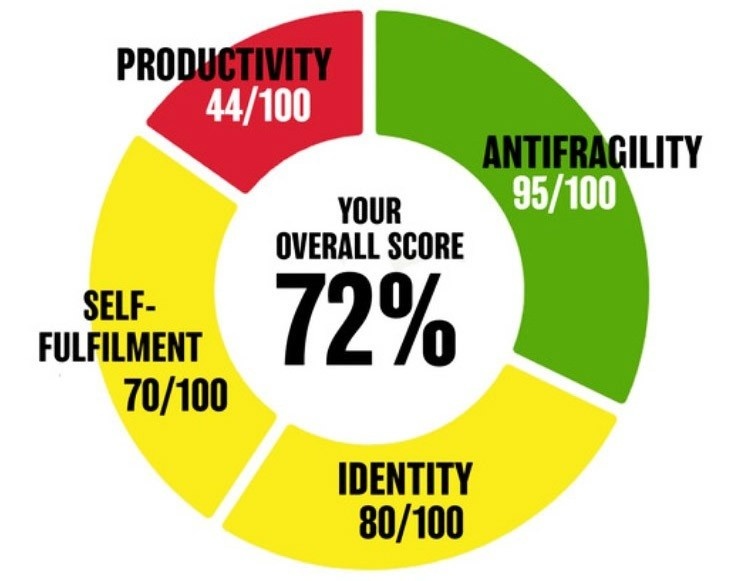SUMMARY
- Do you find yourself shying away from difficult conversations? I really struggled with them in the early part of my career, especially as a CEO, telling the team about bad news, or when performance wasn’t as great as I would like it to be.
- After reading a lot and learning from those around me started to see that there were 4 types of conversation people shy away from:1) Delivering bad news 2) Telling someone their performance was good but not great 3) Letting someone know their job is on the line 4) Firing someone
- When it comes to delivering bad news, the problem is there are always times when we are missing goals at work or facing challenges in our personal life – and if we delay in communicating this, we can do more harm than good.
- If someone’s performing well, it’s hard to tell them they could be doing better – but good enough doesn’t lead to excellence. Acknowledge that they’re doing well but explain where they could do better and be specific about what you want.
- When someone’s job is on the line and we don’t have that conversation we do them a tremendous disservice. In my experience, there tends to be a 3-9 month lag before leaders actually tell someone their job is on the line, but this harms the team and misses an opportunity to improve performance.
- A client recently told me that they were unsure about a senior member of their team. I asked a simple question: “If this person wasn’t on the team right now, would you rehire them?” and he said, “No”. That made it clear to both of us that the person needed to be fired. Those decisions are tough to make, but they will end up harming your organization if you don’t make them.
TRANSCRIPT
Do you find yourself shying away from difficult conversations, shying away from conflict, anything that’s going to create a bit of unease, maybe with your work life or with your home life? Truth is, until you really step into discomfort, especially when it comes to difficult conversations, you won’t reach your full potential in life. Now, I really struggled with having difficult conversations in the early part of my career, especially as a CEO, telling the team about bad news, or when performance wasn’t as great as I would like it to be. Or if somebody simply wasn’t doing a good enough job. But then I read quite a lot about the art of having difficult conversations, took in a lot of wisdom from those around me, and started to see that there were certain types of conversation that weren’t happening often enough.
I also learned a couple of frameworks to have those conversations more easily. And that’s what I want to teach you and talk to you about today. Number one, what are the different types of difficult conversations? Especially in a work context that we tend to avoid to our own detriment, avoiding these conversations actually holds us back. I’m sure you’ve had times when an opportunity to say how you really feel has passed and later you’re sitting there regretting and thinking, “Why wasn’t I strong enough or tough enough to say what really mattered, what I really felt?” And then also I’m sure there are times when maybe you felt super proud of yourself that “Wow, I had the guts to say what I thought or felt”. Then maybe you got a good result. Have you ever noticed this? Has there ever been a time like this in your life?
There certainly has been in mine, where somebody that you respect or that has some kind of authority in your life confronted you, told you that maybe your work wasn’t good enough, maybe that they expected more of you and actually instead of shying away from the conflict, it actually inspired you to a higher level of achievement. Think about it. Because we’ve all had those moments in life, right? And that’s one of the benefits of having difficult conversations – you’re actually going to inspire someone to a higher level of performance. At least you afford them the chance to respond. And that may be the same way that you did in a similar circumstance in your life. When somebody confronted you with feedback, maybe it was a bit tough to hear you give them that same chance to step up. So, the first thing I want to talk about is what are the different types of conversations that people tend to avoid?
What I’m drawing on here is my own experience as an entrepreneur, as a CEO, and also the experiences that I’ve had with my clients. So other entrepreneurs, CEOs, people trying to achieve their full potential in life – the first category of a difficult conversation that isn’t happening enough is when we need to deliver bad news. There are always times when things aren’t going to plan. There are always times when we’re missing goals. There are always times when things are happening in the external environment that is creating hardship for us. And look, I get it. I know that during those times, maybe you don’t want to be the bearer of bad news. Maybe you’re afraid that, well, if I say how things are really going, I might lose something or I might make things worse, or it might lead to an outcome that I don’t want.
I get those fears. You know, I had those same fears, but when you withhold bad news, you can actually do more harm than good. Now you need to take all of this in the context of your situation. Of course, there is some type of news. There are situations when it’s best not to, or think very, very carefully how you might share certain information with certain people, especially if they’re going to be unable to handle it. And if it could send their life into a bit of a spiral or disarray, you have to trust your internal wisdom on those things. But in general, what I notice is that a lot of people, even me in the past, when it came to bad news, I wasn’t so quick to share it. I wanted to, on the lighter side, make it easier for people to handle, but that doesn’t always serve people. It doesn’t always serve you, when you do that.
So bad news is one category that people often struggle with. Another category is, and it relates to bad news, but also could be its own thing – it is that when we’re talking about the performance of someone else, maybe the performance of someone on our team, sometimes when they do good, their performance is good, but not great. It makes it even more difficult to tell them that, “Hey, it wasn’t great”, but let me ask you: this was a good, but not great performance – does that win championships? Does that win battles? Does that win market share? No, of course, it doesn’t – it’s a great performance that leads to great results. And so even when someone is performing well, but not at a great level, we can’t shy away from that as a difficult conversation – we need to do them the justice of telling them that, “Hey, you did quite well on this, but how might the best version of you have done a little bit better?”, or “If you were to do this again, how might you deliver an even higher result?” or “If you were to continually improve, because I know you want to continually improve, how might we have done things a little bit differently?”
There are ways of telling people that they can be performing at a higher level, even when they’ve done a good job and you shouldn’t shy away from that. Another category that I find, especially within teams, is when someone’s job is on the line. We really don’t want to have that conversation. And we do them a tremendous disservice. We don’t tell them that their job is actually on the line. In my experience, both from my personal experience and in working with other people, managing teams and CEOs of companies, there tends to be a three to nine-month lag before they actually share with someone that their job is on the line. And that’s three to nine months for everyone else in the team, by the way, to question your leadership and ask themselves, “Why isn’t he or she saying something to this person?”, because they certainly will recognize the suboptimal performance as well. But also when you don’t tell someone that their job is on the line, you lose a moment of the window where you can actually change the trajectory of their performance. You might lose that window of opportunity, where if they knew what was truly at stake, they might’ve changed what they were doing and recovered themselves.
And then the last category of conversations, those difficult conversations that I don’t see happening enough, especially once again, in a business context and the management of teams is you’re fired. Now, I had someone I coach who recently told me that they were unsure about a senior member of their team. If that member of the team was getting the right feedback in the right way to do the job that they wanted them to do. And they’re trying to enroll me in what is the right way to give this person feedback? How do we pull the nose up on the plane? And I didn’t subscribe to that. Instead, I asked, “Well, what if you crashed the plane and hopped on a new one? What if you got rid of this person, instead of trying to pull the nose up? Maybe we’re on the wrong plane”.
And I asked a simple question: “If this person wasn’t on the team right now, would you rehire them?” And he said, “No”. I said, “Well, okay, you’ve been trying to pull the nose up for months here. So maybe it’s time to make a transition, make a move so that you’re “fired” conversation happens.
So four types of conversations that generally people shy away from in a team business context: delivering news; telling someone their performance was good, but not great; letting someone know that their job is on the line; and ultimately letting someone know that they’re fired. If it’s necessary. Now, those are the four conversation types that I see most often. Here’s a couple of frameworks that can help you have these conversations.
One is a framework that I picked up when I was working at McKinsey & Company. McKinsey & Company is really focused on communication for all of its consultants, and one of the simple tools that I picked up there was called Situation Complication Resolution. Now what this tool is, is simply a way of communicating information. I find it especially useful when you’re communicating bad news. So the situation is information that shouldn’t be new to the listener. Actually, you’re just trying to include information in this part of the dialogue. “This is what I want to say”. And then now I’m going to introduce a complication and you’re going to talk about the complication, and now here comes the resolution.
You don’t actually talk like that – you’ll sound like a robot. But it’s just a way to frame your conversation, your dialogue. So the situation, you’re introducing information that the person will already know to be true because you’re seeking an acknowledgment. It’s almost like they’re going to say, “Yes, I know this to be true”. So for example, you could say “We all know that the companies have been under tremendous pressure recently, and we need to find ways to reduce costs”. Given the uncertainty of the environment, a complication is a new bit of information which you’re going to add that’s going to prompt the person listening to ask a question to which your resolution becomes the answer. So, the complication in this example could be “Despite all of our cost-cutting measures and despite all of the revenue-generating activities that we’re trying, we’re still not generating enough cash, especially given the continued uncertainty in the environment. And we must find ways to reduce costs further”. That’s going to prompt a question, “Oh gosh, what costs are going to be reduced? Is my job on the line?”, et cetera, et cetera.
And then that allows you to continue with your resolution, but you set the information up in a way that’s going to make it easier for the person to process. You started in an area that they already know, that they know to be true, followed by a complication, which prompts a question in their mind to which your resolution is the answer. And in that resolution, you could say, “Well, we’re going to have to look at further cost reductions amongst our staff. We’re going to have to look at further cost reductions within additional expenditures that the company has a fixed cost variable cost”. And you may even say that “We’re going to have to look at even further revenue-generating activities”. So remember that: situation, complication, resolution.
I want to leave you with one additional framework that you can try. It’s got a horrible name. It’s called Nonviolent Communication – NVC. You can Google this and you’ll find lots of different ways to practice using this framework and to model it. But it’s simply four components. And you start with an observation followed, by a feeling you’re feeling, followed by a universal need, followed by making a request. So let me give you an example of how a typical conversation about somebody’s poor performance might go.
“Hey, Johnny. Your report is really messy and really, you should be doing so much better. You know, it’s just really low quality lousy”. How do you think that’s going to make Johnny feel? It’s going to create this resistance inside him, right? Here’s a different way of doing it. Start with the observation where there’s no judgment. It’s just a fact observation; “Johnny, in your last report, I noticed there were three errors.That makes me feel a bit worried or anxious”. Johnny can’t say anything yet on these two things, right? You just stated a fact, you know, you’re talking about how you feel the universal need, right? I can’t say anything against this either that makes me feel worried and anxious, a universal need.
“When I need to feel that the team is producing quality work, that’s going to hit our objectives. Air free quality work. It’s hard to debate against why wouldn’t a manager, a leader, want high-quality air-free work to hit the company’s objectives?”
State your request, make your request going forward: “Do you think you could double-check your work, please? And perhaps offer up to a colleague for a quick glance to make sure that our work is higher quality and error-free for you going forward”.
He can’t really say much about that, right? So that was a nonviolent non-confrontational way of delivering difficult news. I hope you found these useful difficult conversations. They’re something that you should step into as a person, as a manager, as a leader – whether it’s bad news; telling somebody their performance is good, but not great; telling them that their job’s on the line; telling them that they’re fired. You can think about the “situation, complication, resolution” as a framework for delivering that news. Or you could try nonviolent communication in your observation, feeling universal need followed by your request. And this should make you step into having difficult conversations more easily.
How do you get better at this? Through practice. That’s the only way to do it. And the more difficult conversations you have, the more you state your true ambitions, wants, and needs in the world. Higher you’ll go in life and in business.




